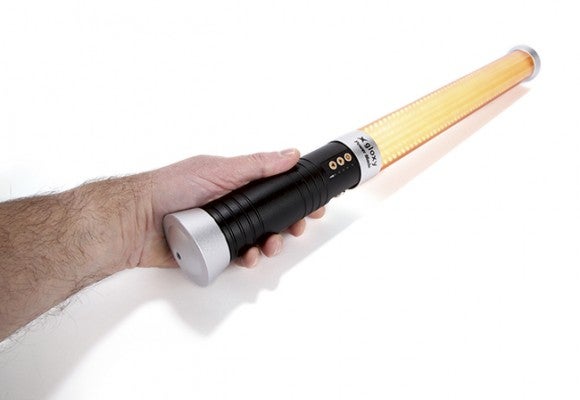Bob Newman looks at the increasing popularity of LEDs for stills photography
While working on a project I have underway, I was talking to a supplier of xenon flash tubes. This particular company manufactures the tubes used in one of the world’s leading brands of studio flash equipment, but they were worried about declining business, the problem being the increasing popularity of LED (light-emitting diode) lighting.
Both a xenon flash tube and an LED have the advantage of being very efficient converters of electrical energy into light. The problem with inefficient light sources is twofold. First, the energy not used to generate light appears as heat, so these sources tend to get very hot, which can be dangerous. The other problem occurs when we have a limited amount of energy available, such as when out and about, and are dependent on battery power. For this reason, the xenon flash tube has been the ‘go-to’ portable light source for still photography for some 40 years.
The movie photographer had to rely on hot, inefficient, incandescent lighting. In the past ten years, the advent of the high-power, white-light-emitting diode has provided an efficient continuous light source suitable for moving pictures, and most portable video lighting uses this technology.
Popularity contest
While still photography does not require the use of a continuous light source, this does offer some advantages, such as easier evaluation of lighting effects and light for autofocusing. For these reasons, LED lighting has become more popular for still photography. High-efficiency sources do, however, have their associated disadvantages. Correct colour rendition depends on the light illuminating a subject approximating to ‘black-body radiation’, that is, the light emitted by a very hot object (such as the sun or a lamp bulb).
Xenon tubes and LEDs emit light using a quantum mechanism, whereby electrons are energised to a greater extent than usual and then release a photon light as they return to their normal state, producing a fixed wavelength rather than the random mix found in black-body radiation. In the case of the xenon tube, the energetic plasma in the tube provides very many fixed frequency bands (see figure 1) and the light is a reasonable match for daylight.
The LED is more problematic. The LED itself emits blue/violet light, which is converted to white by a phosphor, resulting in an output that peaks in the blue (see figure 2). The outcome is that LEDs can give poor colour rendering. LED manufacturers rate the accuracy of the colour rendering using a Colour Rendering Index (CRI), whereby black-body radiation would give a CRI of 100. For photographic use, a CRI of 80 is about the minimum usable for good colour.
About Bob Newman
Bob Newman is currently Professor of Computer Science at the University of Wolverhampton. He has been working with the design and development of high-technology equipment for 35 years and two of his products have won innovation awards. Bob is also a camera nut and a keen amateur photographer







